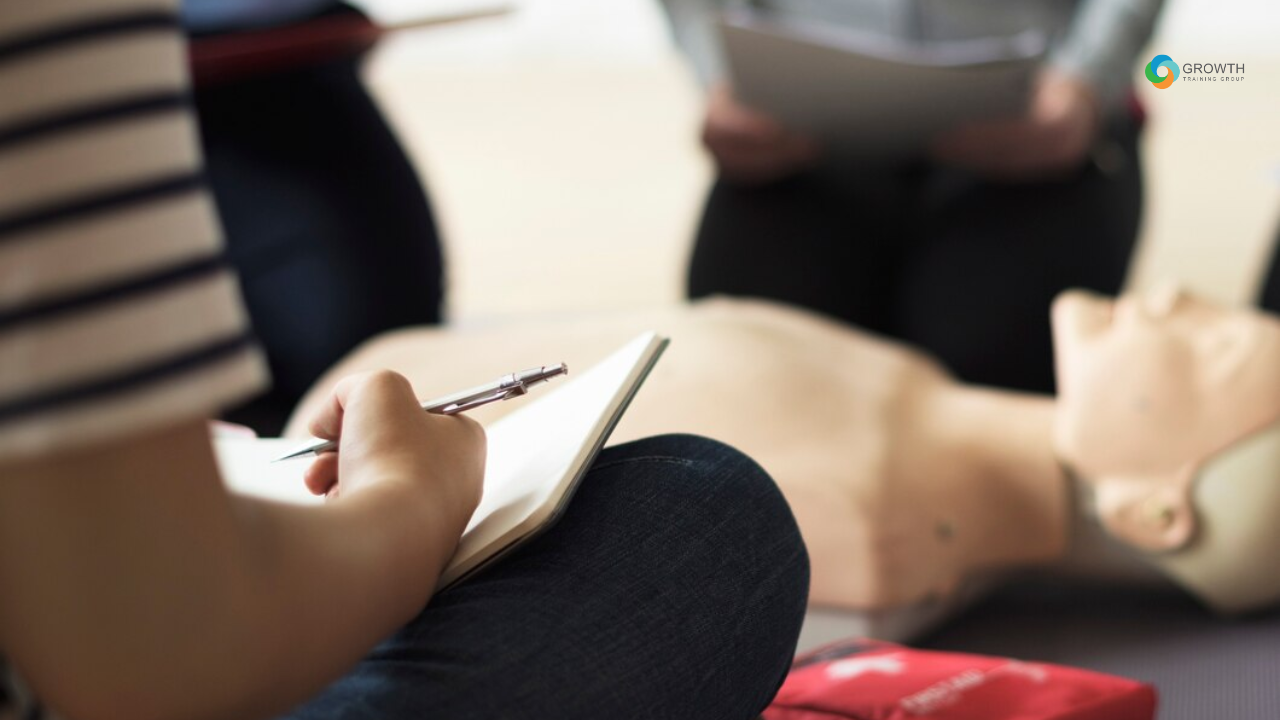-
Fil d’actualités
- EXPLORER
-
Pages
-
Groupes
-
Evènements
-
Reels
-
Blogs
-
Offres
-
Emplois
-
Forums
-
Film
What are the 5 Key Steps of First Aid in Order?

First aid can make the critical difference between life and death in emergency situations. Knowing the correct sequence of actions to take when faced with an injured or unconscious person is essential, whether at home, work, or in public. With rapid and effective intervention, first aid can minimise harm, stabilise the injured party, and improve their chances of recovery until professional help arrives.
This article outlines the five key steps of first aid in the correct order and explains why understanding this sequence is crucial. For those in Australia seeking to build or refresh their skills, professional courses such as Workplace First Aid Training in Melbourne offered by Growth Training Group provide hands-on experience and certification for real-world readiness.
Step 1: Assess for Danger
The very first priority in any emergency is to ensure safety—both for the rescuer and the casualty. Before approaching, check the scene for any dangers such as fire, traffic, electrical wires, chemicals, or other hazards.
-
Only move the injured person if their life is at immediate risk (e.g., fire or collapsing structure).
-
Wearing personal protective equipment like gloves can reduce risk.
-
Never put yourself in danger while attempting to help others.
Ensuring the environment is safe reduces the chances of further injury and allows you to focus on offering effective care.
Step 2: Check the Response
After confirming the scene is safe, check whether the casualty is conscious and responsive:
-
Gently shake their shoulders and ask loudly, "Are you okay?"
-
Look for any movement or verbal response.
-
If there is a response, reassure the casualty and try to find out what happened.
-
If there is no response, it is critical to get help immediately.
This step allows you to determine the severity of the situation and what actions to take next. A non-responsive person requires urgent attention.
Step 3: Call for Help
If the casualty is unresponsive or seriously injured, call emergency services immediately by dialling 000 in Australia.
-
Clearly state the location, nature of the injury or illness, number of people affected, and any first aid being administered.
-
If you are alone, call first and then begin first aid unless the casualty is choking and needs immediate attention.
Calling for professional help ensures medical support is on the way while you begin essential first aid.
Step 4: Open the Airway and Check Breathing
Once help is on its way, it’s vital to check and ensure the casualty’s airway is open:
-
Tilt the chin upwards and lift the jaw to open the airway.
-
Look, listen, and feel for normal breathing for up to 10 seconds.
-
If the person is breathing normally, place them in the recovery position and monitor their condition.
-
If not breathing or breathing abnormally, prepare to give CPR.
Maintaining a clear airway and assessing breathing saves lives by preserving vital oxygen supply to the brain and organs.
Step 5: Provide CPR or Appropriate First Aid
If the casualty is not breathing normally, begin cardiopulmonary resuscitation (CPR):
-
Deliver 30 chest compressions at a depth of about 5-6 cm and a rate of 100-120 compressions per minute.
-
Follow with 2 rescue breaths if trained, ensuring the airway remains open.
-
Continue this cycle until emergency responders arrive or the casualty regains breathing.
If CPR is not possible, hands-only chest compressions continue to provide critical blood flow.
In cases of other injuries—severe bleeding, burns, fractures—apply appropriate first aid techniques as trained.
Why Knowing the Correct Sequence Matters
First aid is most effective when performed in the right order. The sequence—from danger assessment to CPR, maximises safety and increases survival chances. Without proper sequence knowledge, rescuers may endanger themselves or the casualty, delay critical interventions, or worsen injuries.
Professional training, such as the Workplace First Aid Training in Melbourne offered by Growth Training Group, ensures participants master this sequence with practical skills and confidence to respond effectively across workplace and community settings.
Additional First Aid Considerations
-
Defibrillator Use: Many workplaces and public spaces have Automated External Defibrillators (AEDs). Knowing when and how to use these lifesaving devices complements CPR skills.
-
Choking and Allergic Reactions: Different emergencies require tailored procedures; knowing these protocols is part of comprehensive first aid.
-
Continuous Monitoring: After stabilising a casualty, continue to monitor consciousness and breathing until help arrives.
-
Documentation: Record important details and relay them to emergency personnel on their arrival.
How Growth Training Group Can Help
Growth Training Group specialises in providing accredited first aid training courses tailored to workplace safety standards across Australia. Their experienced instructors deliver engaging, practical sessions covering:
-
The full first aid sequence
-
CPR and AED training
-
Managing bleeding, burns, fractures, and other injuries
-
Emergency response planning
Their Workplace First Aid Training in Melbourne equips participants with relevant certifications and critical confidence to handle emergencies efficiently.
Conclusion
The five key steps of first aid - assessing danger, checking response, calling for help, opening the airway and checking breathing, and providing CPR or appropriate care form the foundation of effective emergency response. Everyone should understand these steps as they can save lives in situations from the workplace to public venues and the home.
To gain comprehensive skills and certification, consider enrolling in professional courses with trusted providers like Growth Training Group. Preparedness today means more lives saved tomorrow.
- AI
- Vitamins
- Health
- Admin/office jobs
- News
- Art
- Causes
- Crafts
- Dance
- Drinks
- Film
- Fitness
- Food
- Jeux
- Gardening
- Health
- Domicile
- Literature
- Music
- Networking
- Autre
- Party
- Religion
- Shopping
- Sports
- Theater
- Wellness


